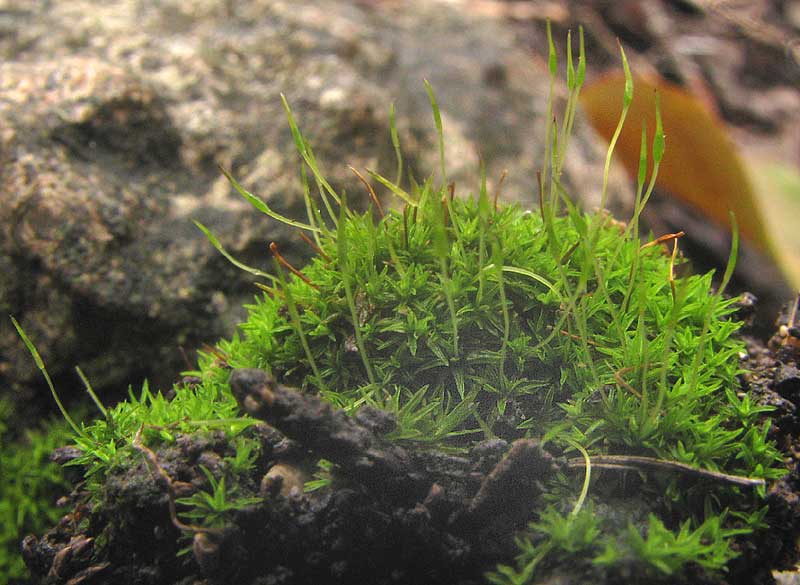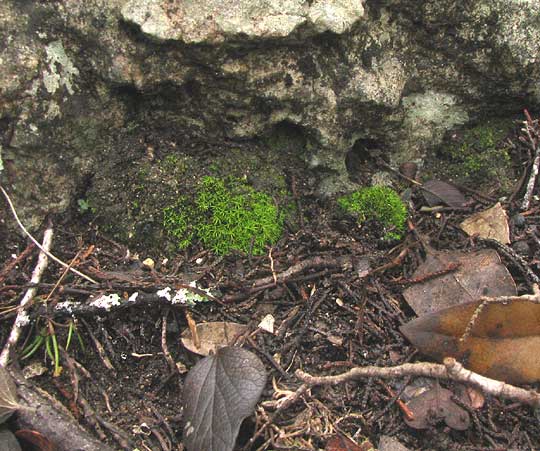Excerpts from Jim Conrad's
Naturalist Newsletter

from the January 5, 2014 Newsletter issued from the Frio Canyon Nature Education Center in the valley of the Dry Frio River in northern Uvalde County, southwestern Texas, on the southern border of the Edwards Plateau; elevation ~1750m (~5750 ft); N29.62°, W99.86°; USA
CONTROVERSIAL WEISSIA MOSS
Atop our hill a hand-size patch of moss grows on thin soil accumulated at the base of a vertical, shadowy, well protected wall beneath a shallow overhang of hard Edwards Limestone, as shown below:

It's too arid here for most moss species to survive, and the ones who can be found seldom produce spore-producing sporangia, or capsules, which are needed for identification. However, the mosses in the picture were issuing immature sporangia, as shown at the top of this page.
These are small mosses, the stalked sporangia rising only about ¼ inch high (6mm), so for identification they needed to be looked at below a microscope. The picture that made getting the name possible is shown below:

That image shows that the leaf has strongly incurved or inrolled margins, so the leaves are "concave," or shaped like the front of a boat or the hood worn by a monk. Such leaf tips are said to be "cucullate." This is important because some similar species produce flat leaves. Also note that the tip ends with a sharp, clear tooth, or "mucro." Leaf cells are particularly small and squarish, and each cell upper surface bears conspicuous bumps called "papillae."
Again I've been helped by a page presented by Texas A&M University at Kingsville listing findings of Dr. Cynthia Galloway's "South Texas Moss Project." There moss taxa for counties in southern Texas are listed, and that includes Uvalde County, which with 28 species has more species listed than any other county in the study area. The lists can be browsed at http://users.tamuk.edu/kfcmg00/research.htm.
On the Uvalde County list the three species at the bottom -- Tortella flavovirens, Tortella humilis and Weissia controversa -- all are strikingly similar to one another and look like our moss. However, the Flora of North America says that "... all specimens named Tortella flavovirens that were collected inland from coastal habitats were redetermined to be some other species..." On the basis of that statement, since we're inland, I'm discounting T. flavovirens. The leaf tips of T. humilis are described as not being shaped like a monk's hood, or cucullate, so I'm discounting that one.
That leaves, sometimes called the Controversial Weissia, WEISSIA CONTROVERSA, its common name based on the binomial, which reflects the confusion and disagreement among early bryologists about the species' validity as a species. The Controversial Weissia occurs worldwide and adapts to a remarkable range of habitats -- from "Weedy, soil, rock, disturbed areas, roadsides, fields, acid or calcareous substrates," according to the Flora of North America.